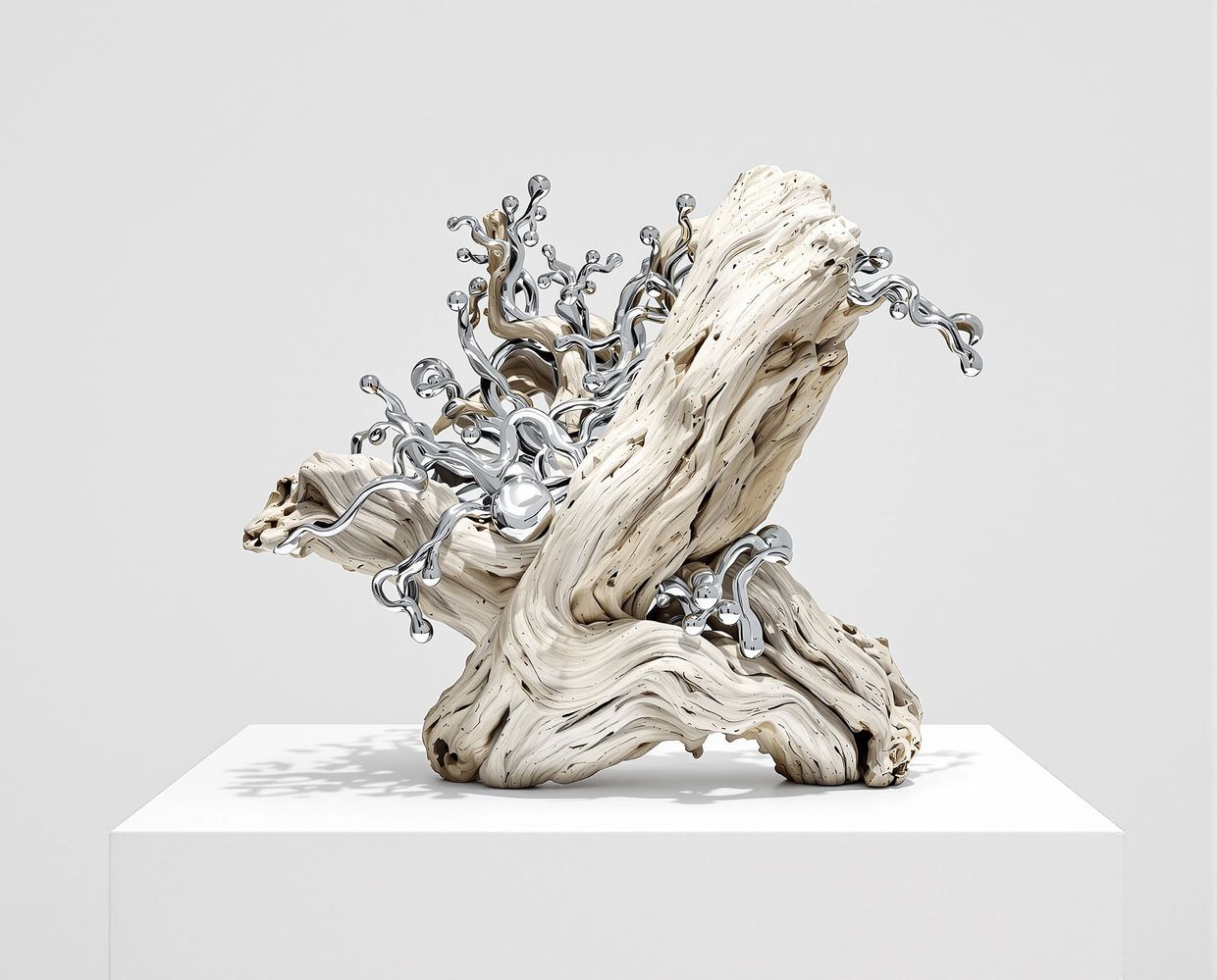Ficta: synthetic sculptural non-objects

These are objects, and yet they are not. Simulacra of sculpture, artefacts conjured from nothing but language and light. Ficta presents a series of synthetic images that imitate material reality so precisely they seem carved, cast, constructed, or grown. Each invention is a fiction, and a contradiction — real and unreal, present and impossible. They sit within a white gallery space, as if awaiting interpretation. They appear to have weight, but they do not. They seem to cast shadows, but no light ever touched them. These are non-objects for a post-material world, sculpted with prompts, and photographed without a camera. Designed to look good on screen, but also printed, framed, and hung on walls.
The series explores how artificial intelligence can be used not to mimic existing objects, but to invent entirely new ones — specimens from a fictional archive of forms. The sculptures are composed of simulated materials: metal, charred wood, compressed bark, glass, stone, and wire — sometimes overlaid with growths that resemble shells, fungi, or roots. And yet none of these materials are real. Their textures, their shadows, the way they absorb or reflect light — each has been imagined, rendered, and hallucinated. There is no original. The object is the image. The image is the artefact.
There is a quiet tension in these works: between decay and precision, ornament and restraint, elegance and entropy. Some evoke the aesthetics of preservation — fossilisation, vitrification — while others lean toward the language of design or ritual. Across all of them runs a single thread: the illusion of touch. These are not simply images to be viewed. They are images that feel as though they might be touched. The series does not ask the viewer to believe in the reality of the objects, but it does invite them to believe, for a moment, in the possibility of their existence. In a time when material truth is increasingly difficult to verify, Ficta proposes a new kind of objecthood: entirely synthetic, and yet strangely convincing.
“Art evokes the mystery without which the world would not exist.“ — René Magritte
Copyright © David Name 2025.
All rights reserved.